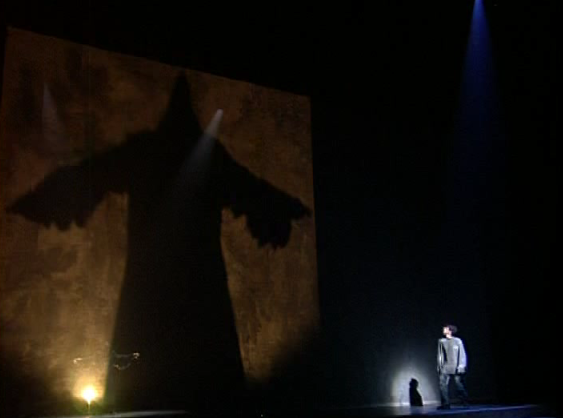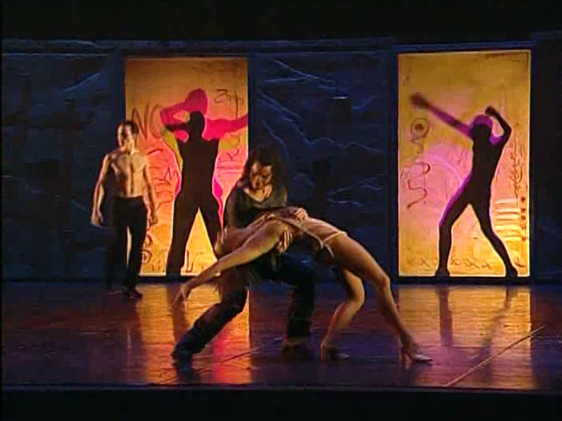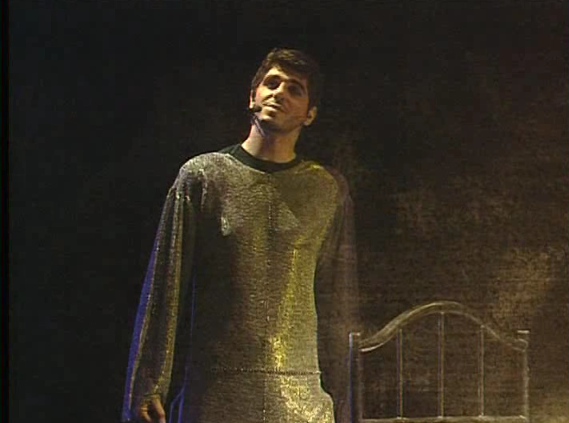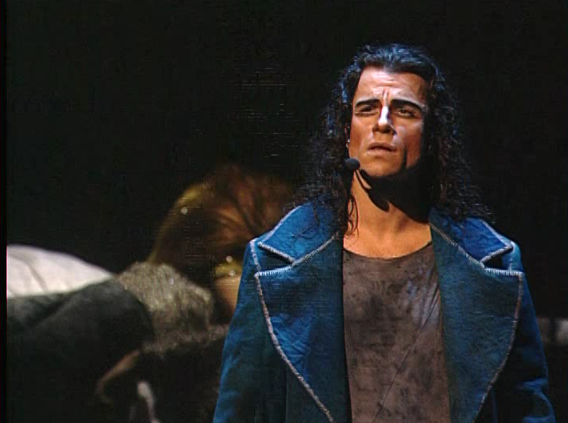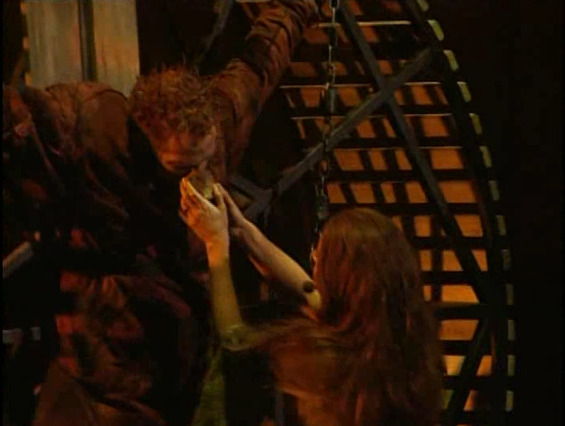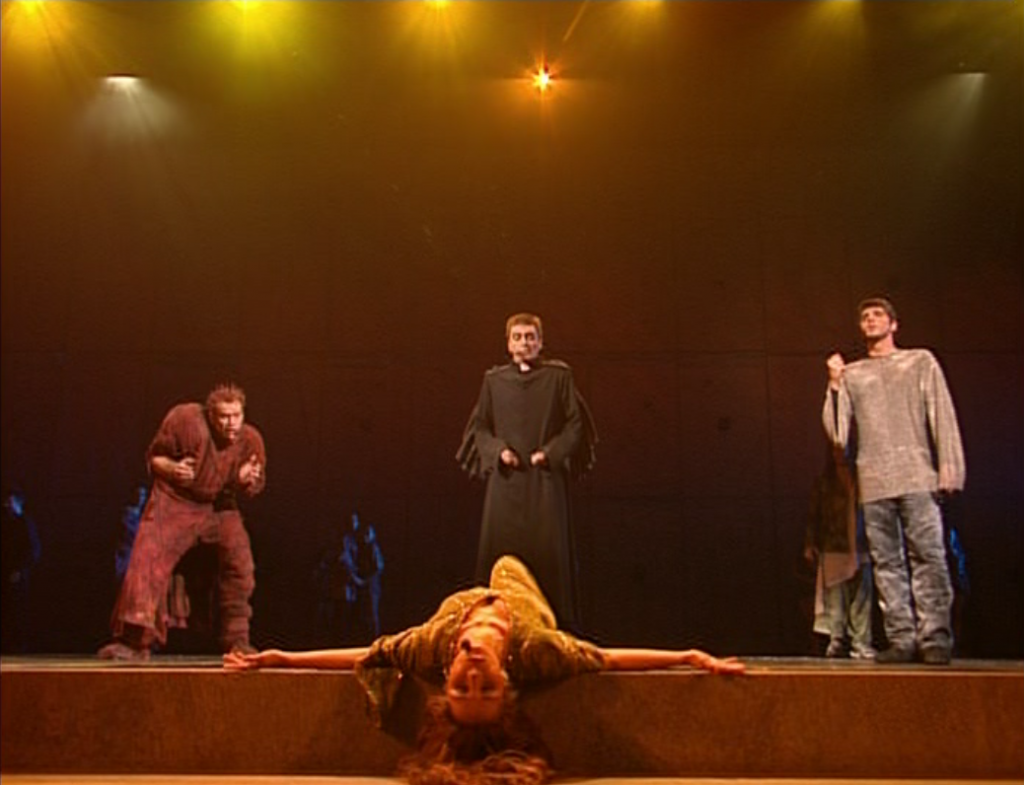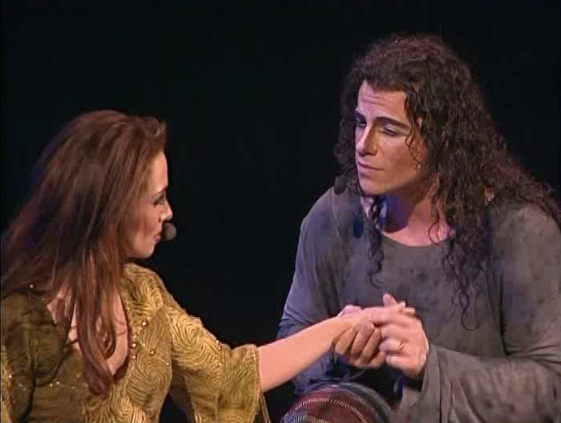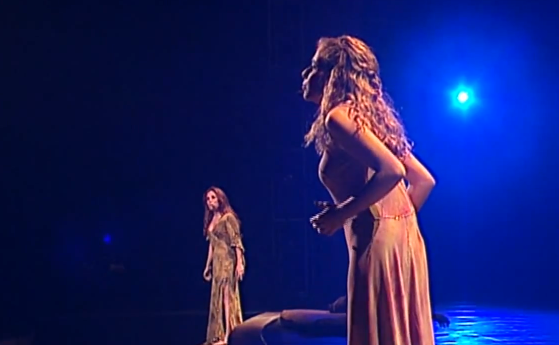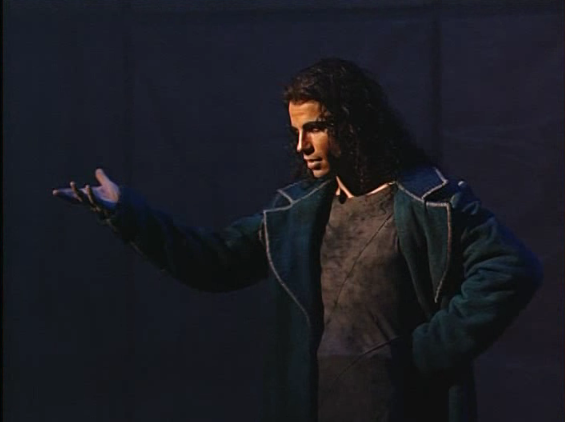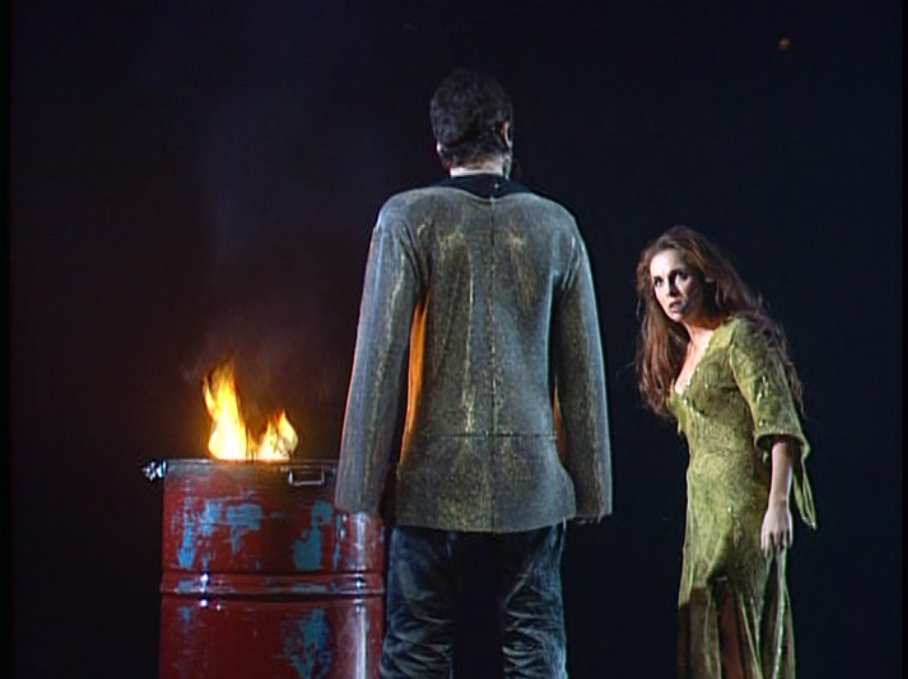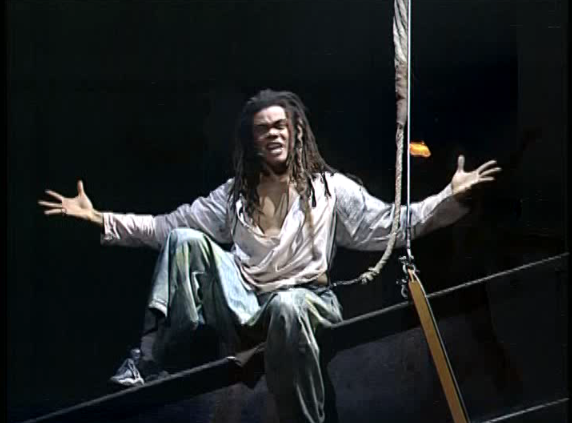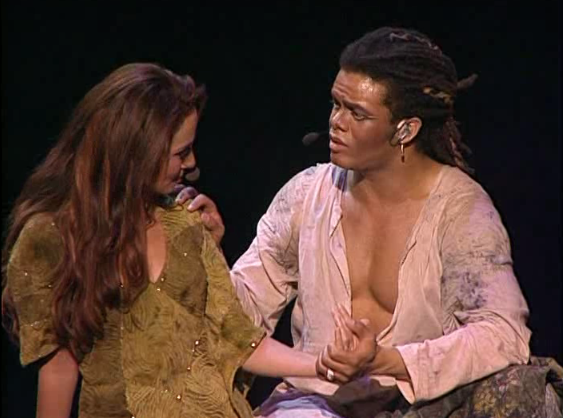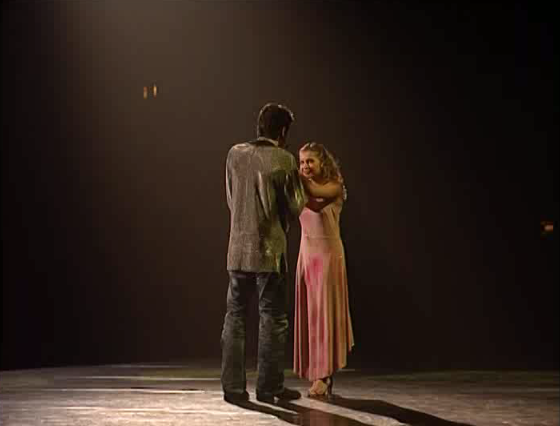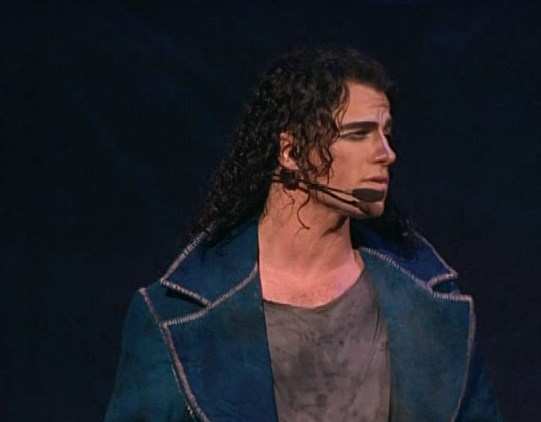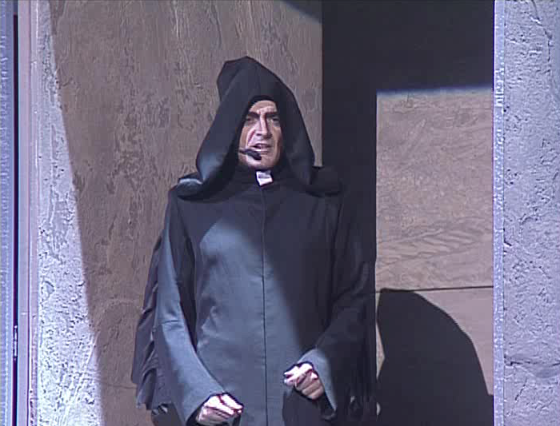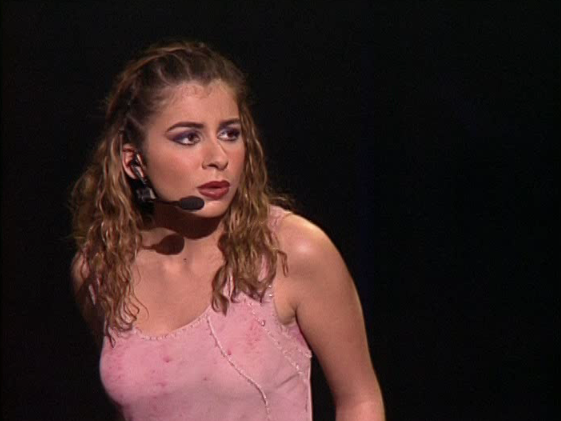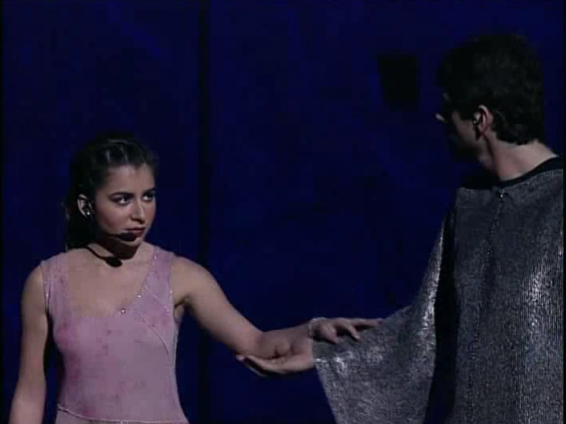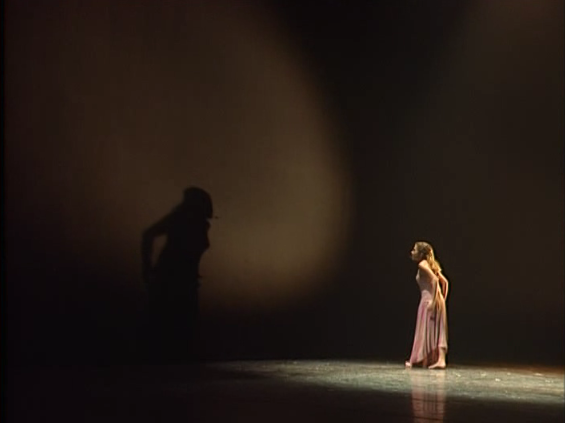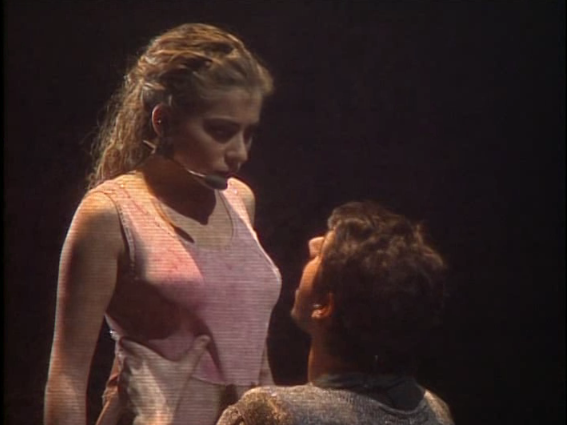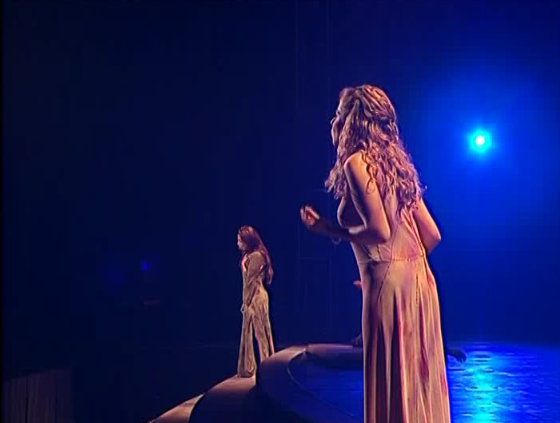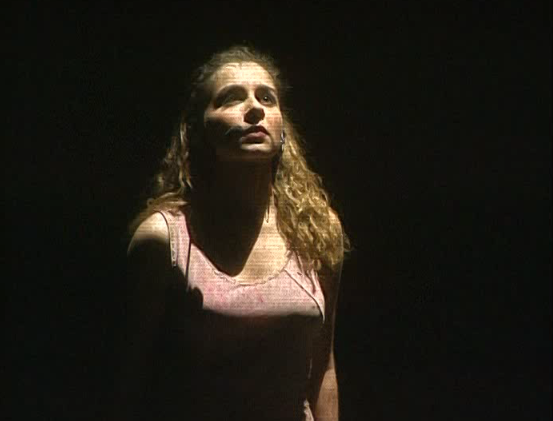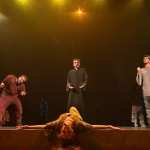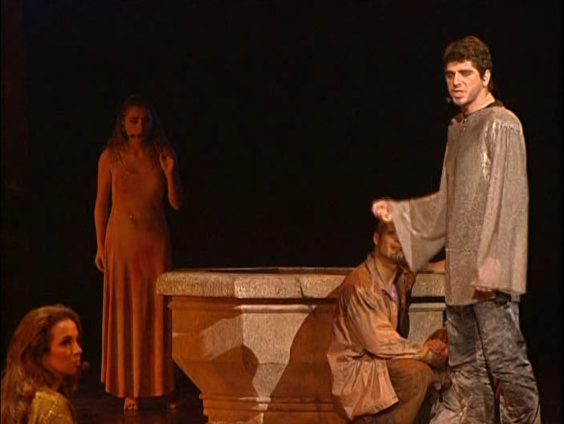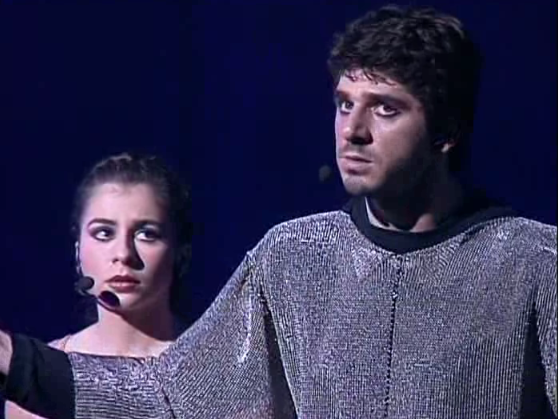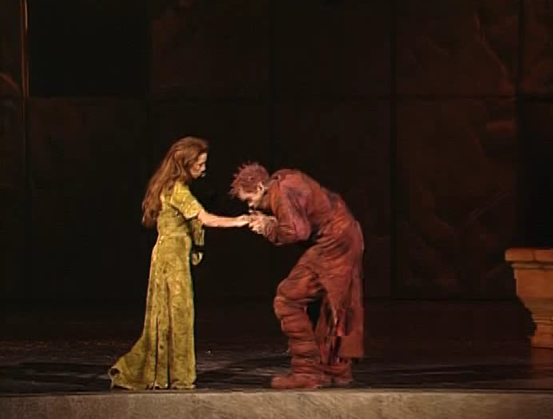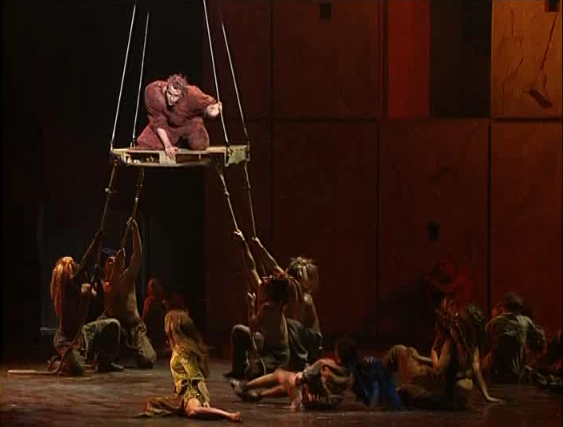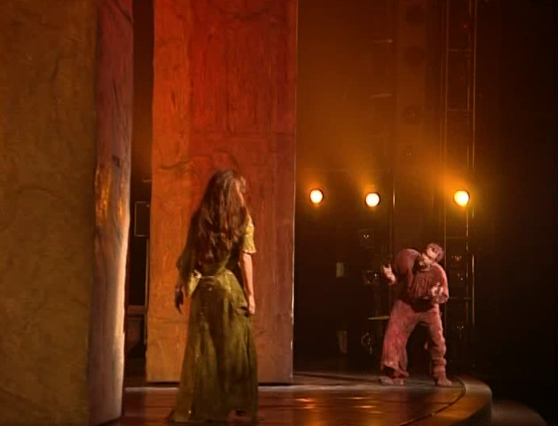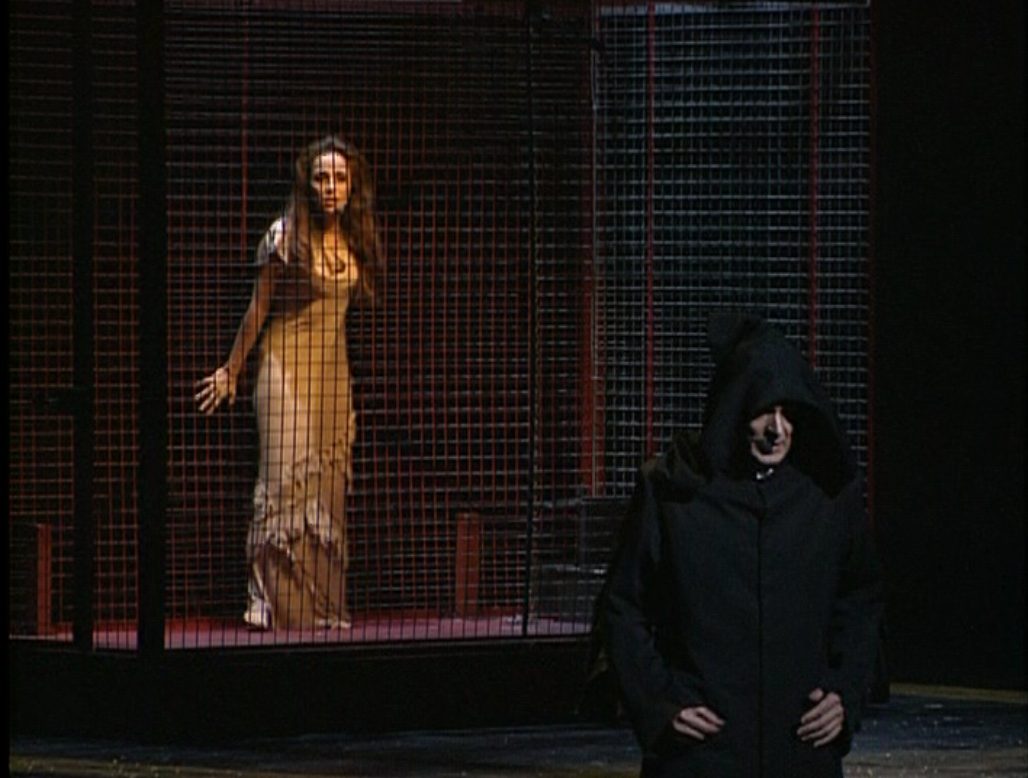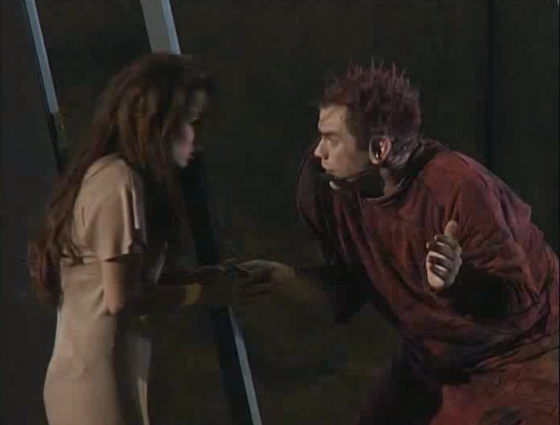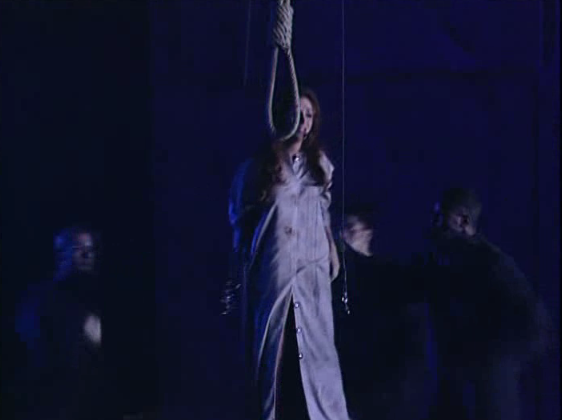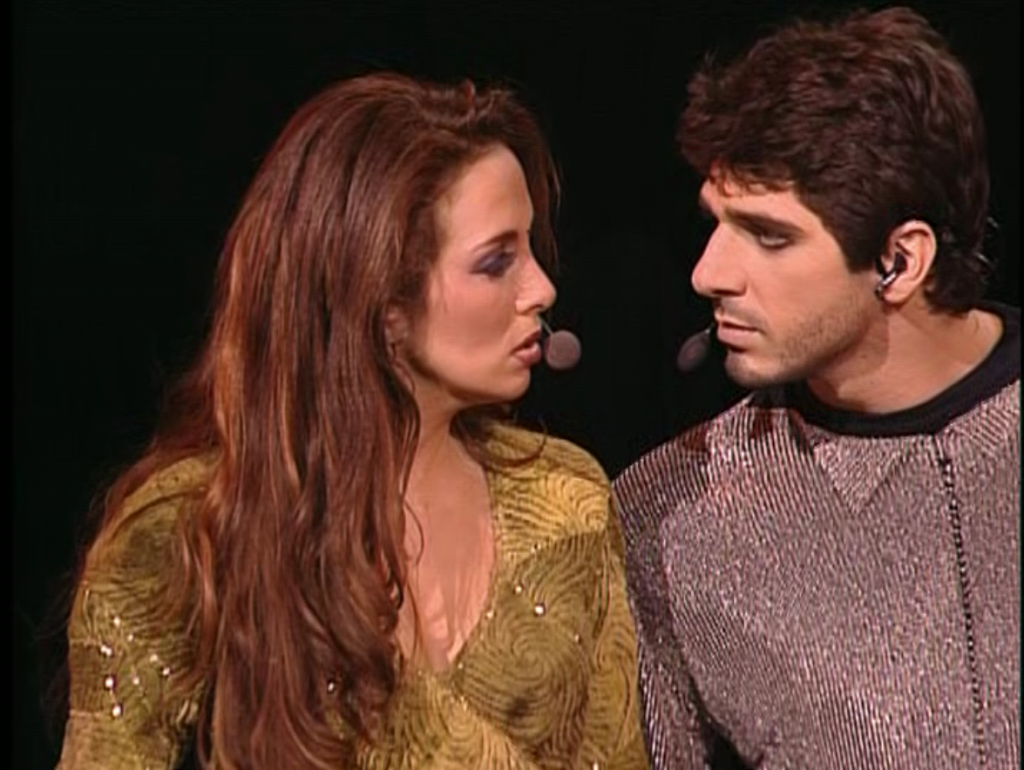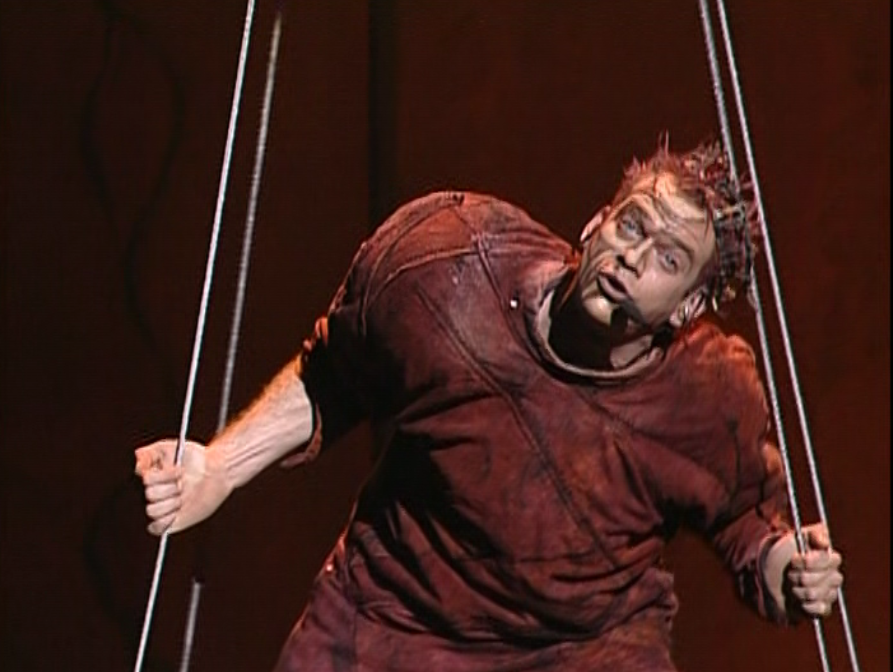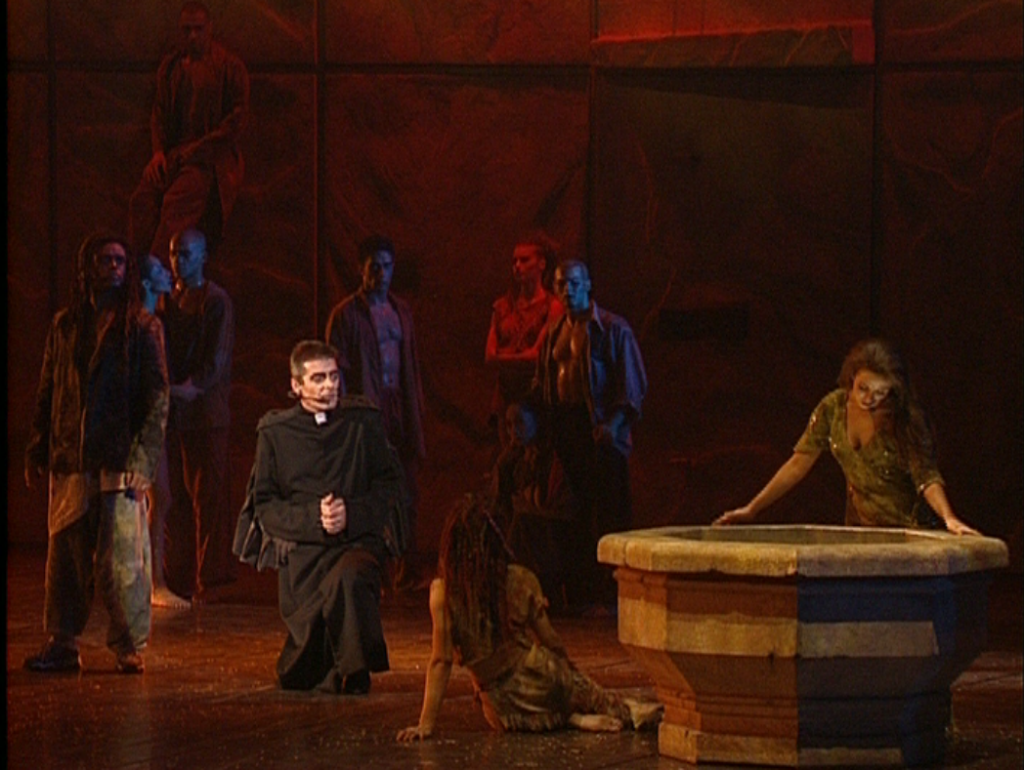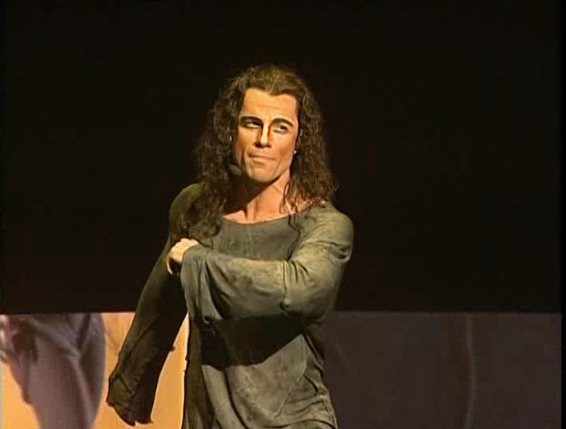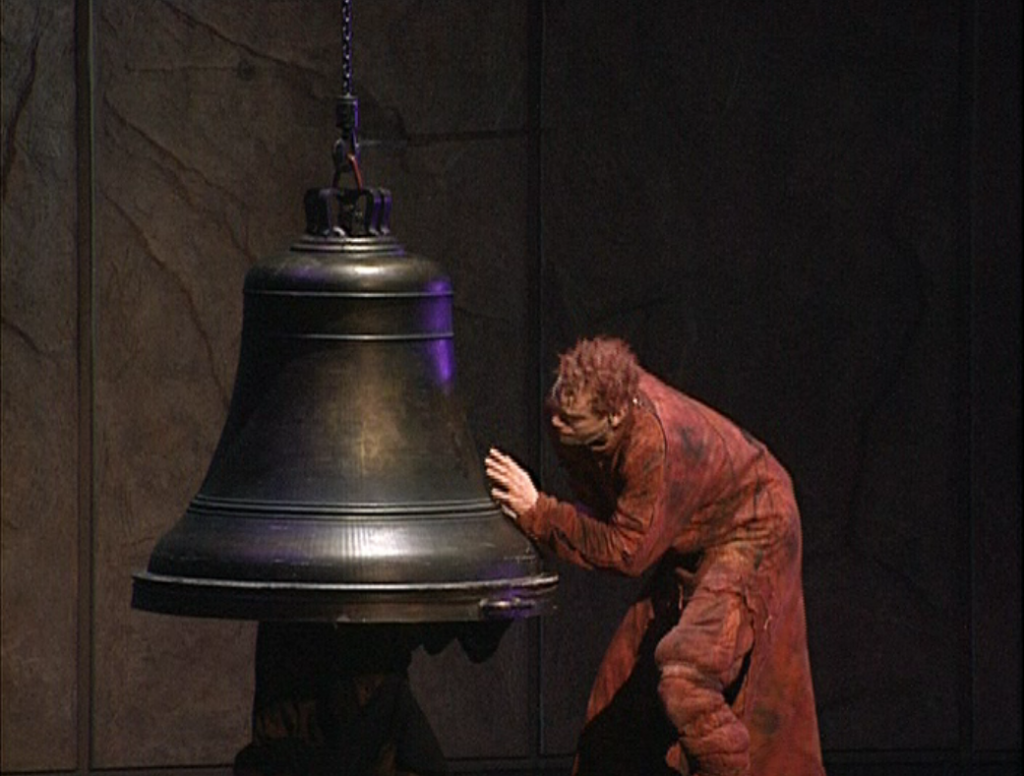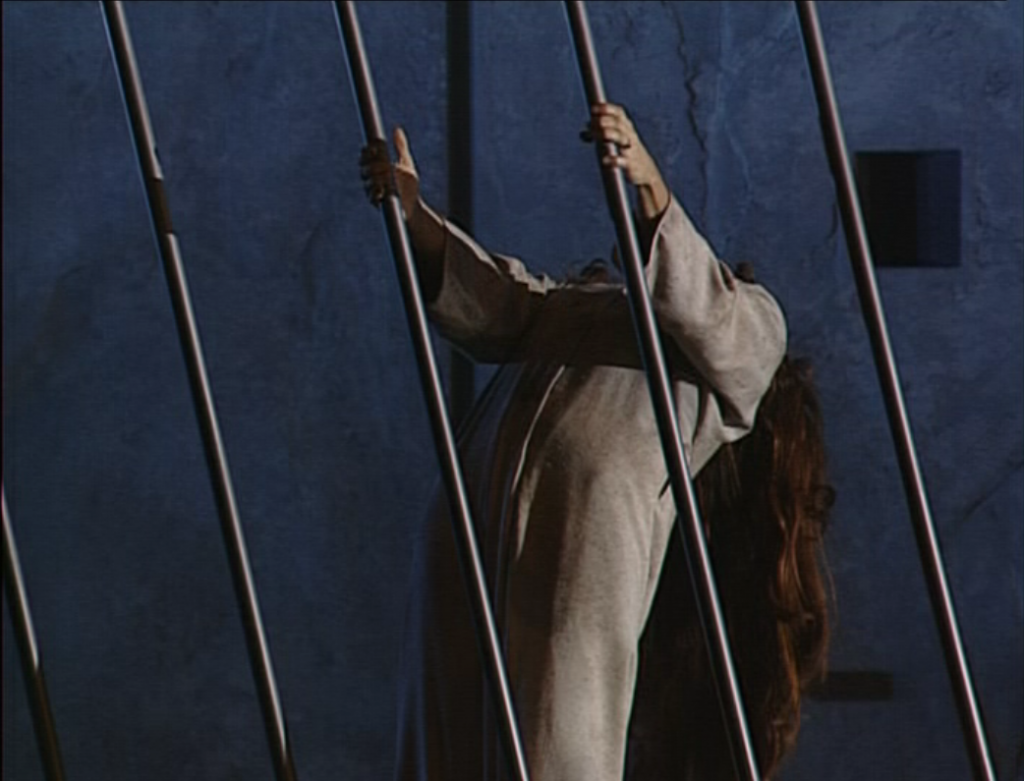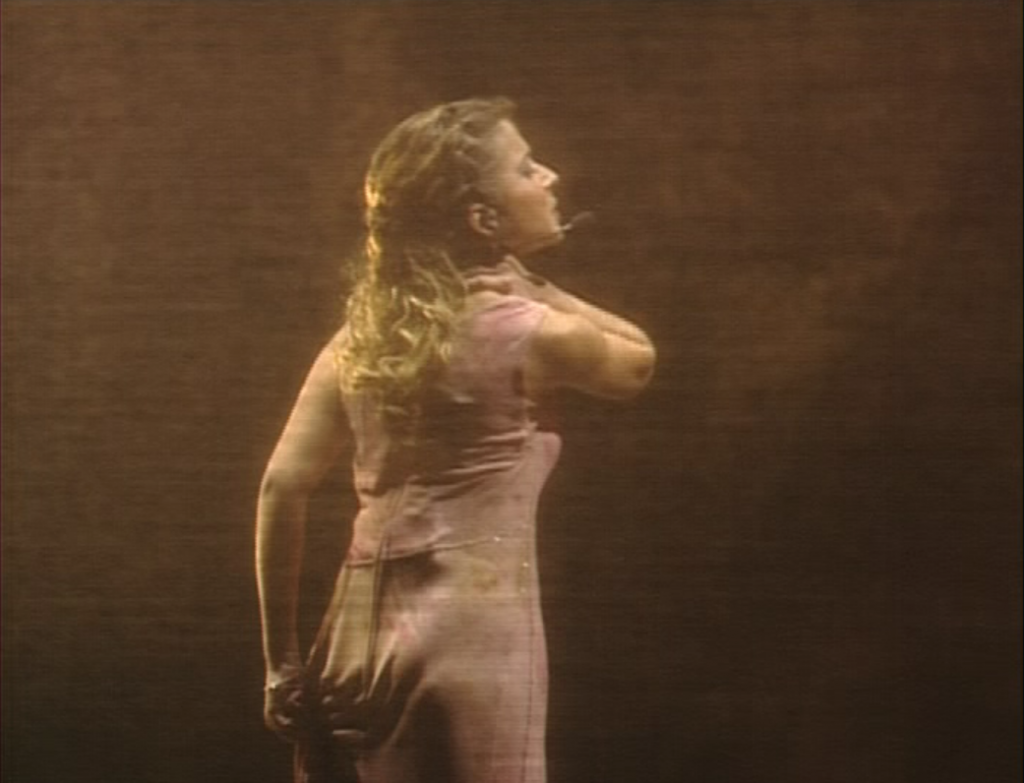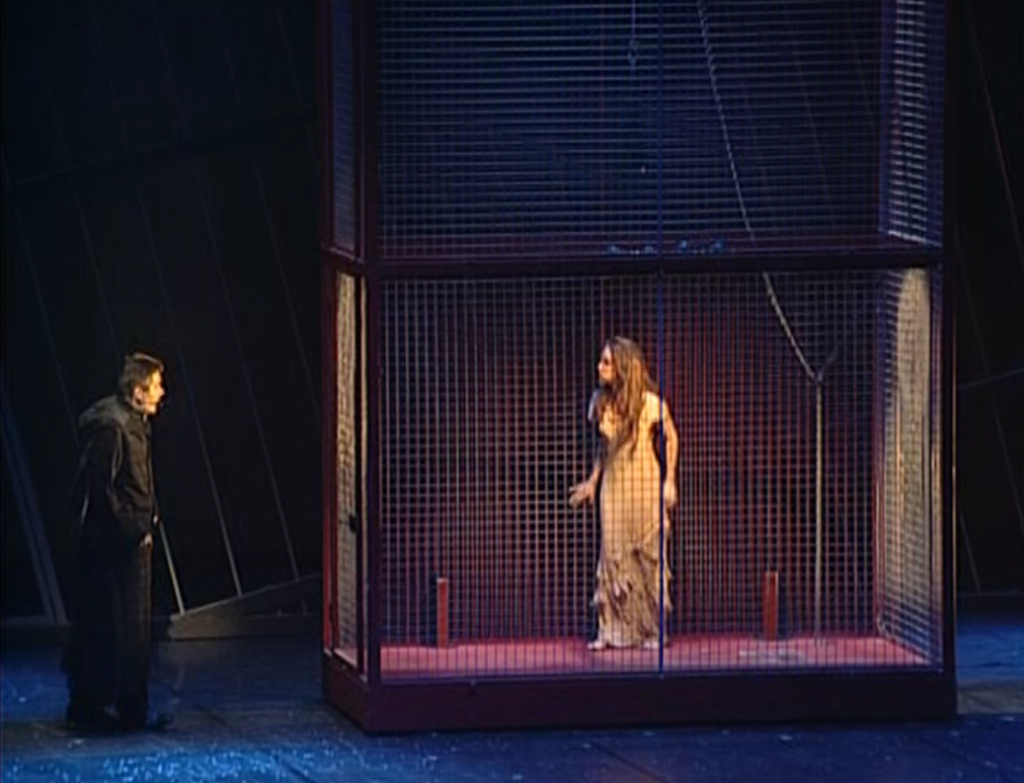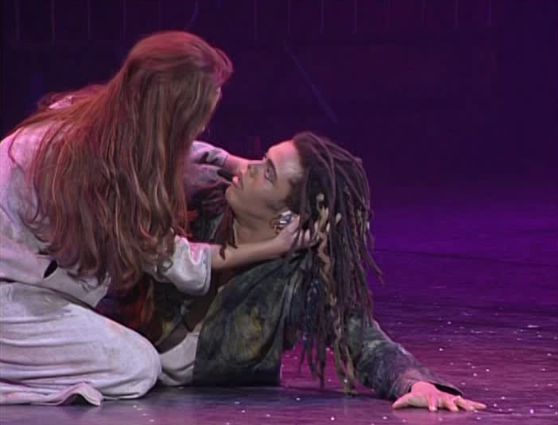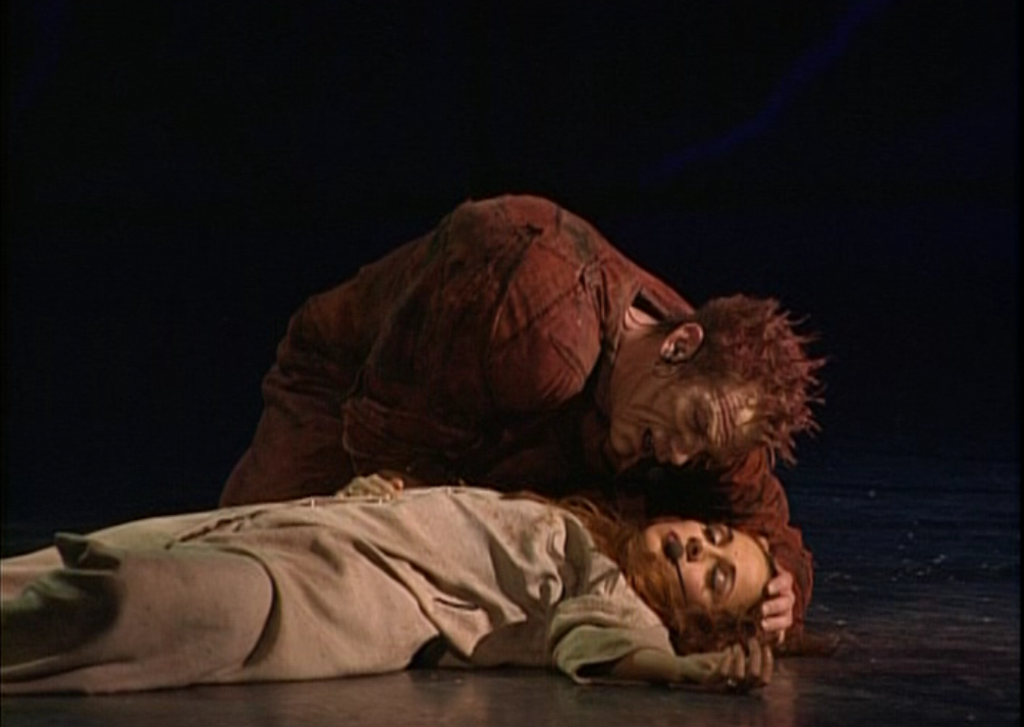L’Ombre (The Shadow)
I always found this song a little more than silly as Phoebus asks why his shadow is wearing a coat and a hat. I get that it’s lyrical but I would buy that Phoebus would wonder why his shadow was a better dresser that him. Also Frollo’s pose is kind of funny as he holds up his arms.
Again, L’Ombre is a bridge songs to get us to the encounter scene. It’s taken from the book which is called something like the Goblin Monk. It’s not as funny as the chapter. Frollo and Phoebus don’t have their witty banter where Phoebus wants to fight and is broke and Frollo offers to pay for the room but wants to watch.
The song is ok. I like the beats and melody. The Lyrics are a little weird. they start silly but then Phoebus aska who would follow him and them asks if he’s a man of god and he likes of course. So I have no clue if Phoebus knows who the shadow is or if he just being dumb. But it’s a good bridge song and it’s really the only song in Notre Dame de Paris that is suppose to be humorous.
Le Val d’amour
Literally means Valley of Love but it’s a brothel. What kind of guy would ask for a tryst at a brothel? Phoebus, what a charmer. My guess is that because he a frequent visitor, he gets a discount for the room.
This scene is a vast departure from the book as Phoebus meets Esmeralda at a inn type house called Pomme d’Eve (or something like that). I guess that isn’t as romantic of a name. Le Val d’amour brothel was mentioned in the book however as the place Jehan goes to for some paid loving.
Le Val d’amour itself is a fun number. Gringoire sings it and sells it as THE brothel to visit when you’re in town as it offers good quality for low, low prices. He even gives detailed directions which is so Victor Hugo. It’s also a great number for Gringoire as he back into his fun party mood like in the Feast of Fools number. Plus this also really the last fun number in the show, so enjoy it.
The dancing is very sensual but in the Italian version is even more sexual. Also when I first heard the original London version I swear I heard the lines “Guitars implore Ga-Glor-ka-Glor.” Not really sure how to spell what I heard….
La Volupté (The Sensuous)
I’ll be blunt, I have never really liked La Volupté. The only thing I have really liked about is Phoebus’ smug look and that could just be Patrick Fiori. That being said I don’t think it’s a bad song, it didn’t make my hit list.
The music is fine and it has a nice sensual electric guitar thing but everything that is silly about the scene in the book is gone, except for that smug look. Also the song indicates that Esmeralda should have a darker skin tone than Phoebus, so at least with original cast, it takes me a little out of things but that is a major nitpick.
But you know what is NOT a major nitpick, we see shadow Frollo stab Phoebus but you also see Gringoire make the same gesture down stage. What this is meant to indicate is that Gringoire is telling the story and is pantomiming the actions, but it gets a little lost as it looks like Gringoire is the one doing the stabbing even though he is not.
All in all, it’s a okay song for moving the plot along but it’s a bit confused in execution. Thank goodness for that almighty smug look.
Fatalité (Fatality)
Again like La Volupté, Fatalité is not my favorite. But it is one of the few songs in Notre Dame de Paris
where all the principle leads are on stage together. I think Belle is the other time unless you want to count the encore.
Again Fatalité has that nice guitar riff that is heard in La Volupté. It is very dramatic as Gringoire sings about how no can escape Fate. It’s a nice closer to Act I but it seems a little lacking if I were to compare it to Le Mis (One Day More) or Phantom (All I ask of you reprise) or even Der Glockner von Notre Dame (Esmeralda). I mean it’s fine but it’s not a song I’m inclined to listen to a lot.
I’d give it a B- as a grade, though I’m not grading the songs so that doesn’t really mean that much.
End of Act I!
All in all, despite my criticisms, Act I is great.
Get the whole GLORIOUS ALBUM HERE

